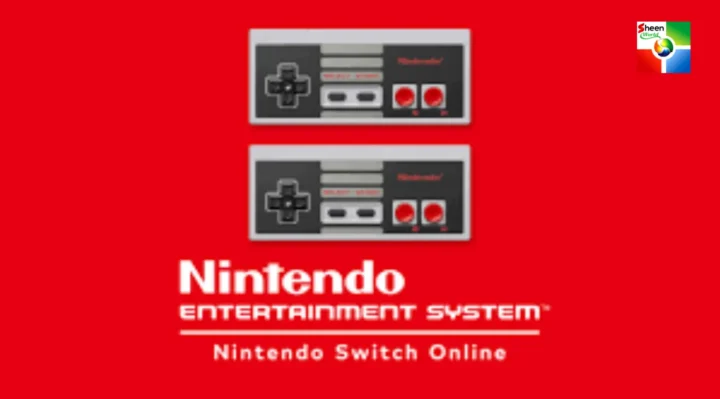
At a glance Nintendo Entertainment
The Nintendo Entertainment System (NES) is a groundbreaking console that revolutionized the gaming industry in the 1980s and 1990s. With its iconic design, memorable games, and significant cultural impact, the NES remains a beloved device among gamers today. In this extensive guide, we will explore the history, features, and legacy of the Nintendo Entertainment System, showcasing why it continues to hold a special place in the hearts of gaming enthusiasts.
Table of Contents
- Introduction to the Nintendo Entertainment System
- The Evolution of Video Game Consoles
- The Birth of the NES
- Key Features of the Nintendo Entertainment System
- Iconic Games for the NES
- The NES Controller: Design and Functionality
- Cultural Impact of the NES
- The NES Legacy and Its Influence on Modern Gaming
- Collecting NES Games and Consoles
- FAQs About the Nintendo Entertainment System
- Conclusion
Introduction to the Nintendo Entertainment System
The Nintendo Entertainment System, often abbreviated as NES, was launched in North America in 1985. It became a cornerstone of home gaming and is credited with revitalizing the video game industry after the crash of 1983. The NES introduced players to a wealth of classic games and set the standard for future consoles, making it a pivotal piece of gaming history.
Why the NES Matters
The NES is more than just a gaming console; it represents a cultural phenomenon that introduced many players to the world of video games. Its innovative design, iconic titles, and family-friendly approach helped establish Nintendo as a dominant force in the gaming industry.
The Evolution of Video Game Consoles
Before delving into the specifics of the NES, it’s essential to understand the evolution of video game consoles leading up to its release.
Early Days of Gaming
The video game industry began in the early 1970s with arcade machines and home consoles like the Magnavox Odyssey. These systems laid the groundwork for future developments, but they lacked the graphics and gameplay depth that would later define gaming.
The Rise and Fall of Home Consoles
The late 1970s and early 1980s saw the rise of systems like the Atari 2600, which popularized home gaming. However, the market became oversaturated with low-quality games, leading to the infamous video game crash of 1983. This crash nearly wiped out the industry, leaving a void that would soon be filled by innovative new systems.
The Birth of the NES
In response to the video game crash, Nintendo sought to create a console that would revitalize the industry. The NES was released in Japan in 1983 under the name Famicom (Family Computer) and quickly gained popularity.
Transition to North America
The NES was launched in North America in 1985, accompanied by a marketing strategy that emphasized its family-friendly image. Nintendo positioned the NES as a toy rather than just a gaming console, which helped it gain acceptance among parents.
Initial Reception and Success
The NES was initially released with a limited number of games, including iconic titles like Super Mario Bros. and Duck Hunt. These games quickly became fan favorites, contributing to the console’s rapid success and leading to a resurgence in the video game market.
Key Features of the Nintendo Entertainment System
The NES was groundbreaking for its time, featuring several key innovations that set it apart from its competitors.
8-Bit Graphics and Sound
The NES utilized 8-bit graphics, which allowed for vibrant colors and detailed sprites. This graphical capability, combined with catchy chiptune music, created an immersive gaming experience that captivated players.
Cartridge-Based System
The NES used interchangeable cartridges, allowing players to easily switch between games. This was a significant improvement over earlier systems, which often had built-in games with limited replayability.
The NES Advantage: Accessories and Add-Ons
The NES supported various accessories, including the Zapper light gun for games like Duck Hunt and the NES Advantage joystick for arcade-style gameplay. These add-ons enhanced the gaming experience and provided players with new ways to enjoy their favorite titles.
Iconic Games for the NES
The NES is known for its extensive library of iconic games that have left a lasting impact on the gaming industry. Here are some of the most notable titles:
Super Mario Bros.
Release Date: 1985
Genre: Platformer
Super Mario Bros. is arguably the most recognizable NES game. Players control Mario as he navigates through the Mushroom Kingdom, rescuing Princess Toadstool from Bowser. Its innovative level design and gameplay mechanics set a new standard for platformers.
The Legend of Zelda
Release Date: 1986
Genre: Action-Adventure
The Legend of Zelda introduced players to an expansive world filled with puzzles, dungeons, and exploration. It was one of the first games to feature a save function, allowing players to continue their adventures at their convenience.
Metroid
Release Date: 1986
Genre: Action, Platformer
Metroid combined exploration with action gameplay, allowing players to traverse a large interconnected world. The game is notable for its atmospheric storytelling and the introduction of strong female protagonists in gaming.
Mega Man
Release Date: 1987
Genre: Action, Platformer
Mega Man became known for its challenging gameplay and unique mechanics, where players could acquire abilities from defeated bosses. The series has spawned numerous sequels and remains a beloved franchise.
Castlevania
Release Date: 1986
Genre: Action, Platformer
Castlevania introduced players to a gothic world filled with monsters and challenges. Its gameplay mechanics and atmospheric design have made it a classic in the action-platformer genre.
The NES Controller: Design and Functionality
The NES controller played a crucial role in shaping the gaming experience. Its design was simple yet effective, allowing players to focus on gameplay.
Classic Design
The NES controller featured a rectangular shape with a D-pad, two action buttons (A and B), and start/select buttons. This layout became the standard for future gaming controllers, influencing designs for years to come.
Ergonomics and Usability
The lightweight design and comfortable grip made the NES controller easy to use for extended gaming sessions. Its intuitive layout allowed players to quickly adapt to controls, enhancing the overall experience.
Cultural Impact of the NES
The influence of the Nintendo Entertainment System extends beyond gaming; it has left a significant cultural mark.
The Rise of Nintendo as a Brand
The success of the NES helped cement Nintendo’s status as a leading force in the gaming industry. The brand became synonymous with quality games and family-friendly entertainment, paving the way for future consoles like the Super Nintendo and Nintendo 64.
The Birth of Gaming Communities
The NES contributed to the formation of gaming communities and fanbases. Gamers began to connect over their shared love for titles like Super Mario and The Legend of Zelda, leading to the growth of conventions, forums, and online communities.
Nostalgia and Retro Gaming
The NES has become a symbol of nostalgia for many gamers who grew up in the 1980s and 1990s. Retro gaming has seen a resurgence in popularity, with many players revisiting classic titles through emulators and re-releases.
The NES Legacy and Its Influence on Modern Gaming
The influence of the NES can still be felt in the gaming industry today. Its innovations and design principles laid the groundwork for future consoles and game development.
Game Design and Development
Many game developers cite the NES as a significant influence on their work. The emphasis on level design, storytelling, and player engagement established benchmarks that continue to shape modern gaming.
Continued Popularity of Classic Games
Many NES titles have been re-released on modern platforms, allowing new generations of gamers to experience these classics. Nintendo has also embraced its legacy through the NES Classic Edition, a mini-console that features pre-loaded NES games.
The Importance of Innovation
The success of the NES demonstrated the importance of innovation in gaming. As technology continues to evolve, the lessons learned from the NES era remain relevant, reminding developers of the value of creativity and player engagement.
Collecting NES Games and Consoles
For many enthusiasts, collecting NES games and consoles is a rewarding hobby. Here are some tips for starting your collection:
Finding NES Consoles and Games
NES consoles and games can be found at various places, including thrift stores, garage sales, and online marketplaces. Websites like eBay and specialized gaming stores often have listings for both consoles and cartridges.
Condition and Authenticity
When collecting, pay attention to the condition of the games and consoles. Look for original packaging and manuals, as these can significantly increase the value of your collection. Authenticity is also crucial; be wary of reproductions and counterfeit items.
Building a Community
Joining online forums and local gaming groups can enhance your collecting experience. Connecting with fellow collectors can provide valuable insights, tips, and opportunities to trade or buy games.
FAQs About the Nintendo Entertainment System
What is the release date of the NES?
The NES was released in Japan as the Famicom in 1983 and in North America in 1985.
How many games were released for the NES?
Approximately 700 games were released for the NES during its lifespan.
Is the NES still popular today?
Yes, the NES remains popular among retro gaming enthusiasts, and many classic titles have been re-released on modern platforms.
Can I play NES games on modern consoles?
Many NES games are available on platforms like the Nintendo Switch through the Nintendo Online service, as well as on virtual consoles for other systems.
What are some of the rarest NES games?
Some of the rarest NES games include “Little Samson,” “DuckTales 2,” and “Tengen Tetris.” These titles can fetch high prices among collectors.
Conclusion
The Nintendo Entertainment System is more than just a gaming console; it is a cultural icon that transformed the video game industry. From its innovative design to its iconic games, the NES has left a lasting legacy that continues to resonate with gamers today. Whether you are a nostalgic player revisiting classic titles or a newcomer discovering the magic of the NES, its impact on gaming is undeniable. Embrace the nostalgia, explore the classics, and celebrate the enduring legacy of the Nintendo Entertainment System!



